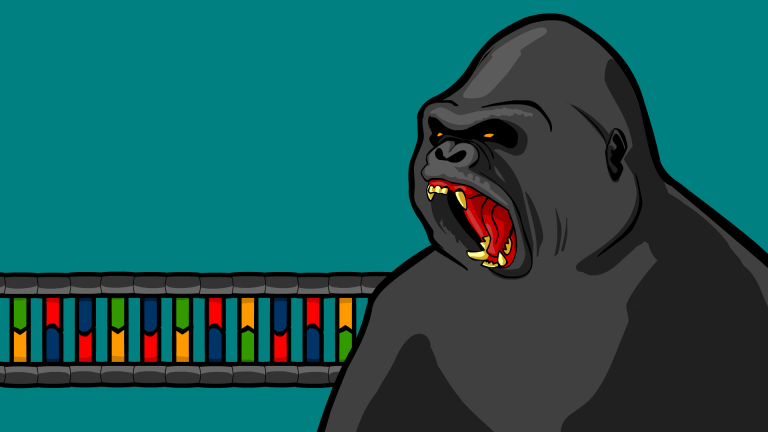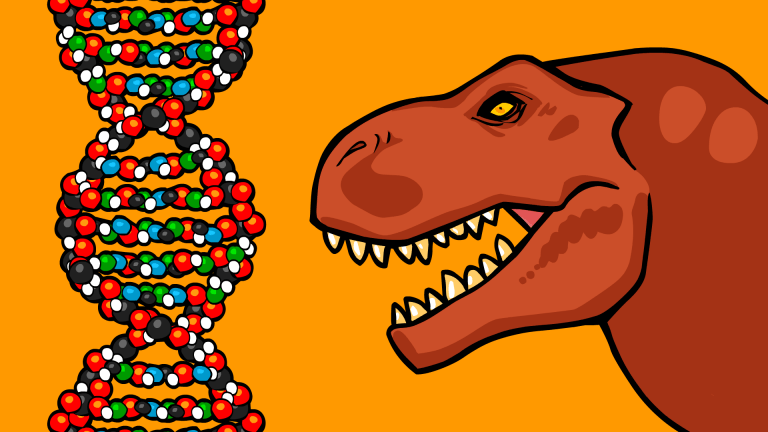Overview
According to our best current estimations, humans have roughly 20,000 genes that either code for proteins or act as templates for functional RNA chains. These gene products (proteins and functional RNAs) interact with each other and other molecules in their environment to produce your traits.
An allele is an alternate version of a specific gene. That might sound confusing so here’s an example to help make sense of it:
If you were to compare your 20,000 genes to a friend’s 20,000 genes, you would find that some of them are different due to mutations. If we suppose that gene number 213 helps determine eye color, you might have a variation of gene 213 that makes your eyes blue while your friend might have a version of gene 213 that makes her eyes brown. This means you each have different alleles (different versions) of gene number 213.
New alleles are constantly arising in populations due to mutations. Natural selection can act on alleles, promoting some over others. Allele competition is so important that some biologists define evolution as the “change in allele frequencies within a population over time“.
Explore Further
Article on the difference between a gene and an allele by Encyclopedia Britannica:
Contributors
Our videos benefit from guidance and advice provided by experts in science and education. This animation is the result of collaboration between the following scientists, educators, and our team of creatives.
Advisors
- Joanna Masel, PhD
- PZ Myers, PhD
Team
- Jon Perry
- Anthony Danzl
Transcript
What is an allele in genetics?
As we’ve learned in earlier videos, a gene is a stretch of nucleic acid (usually a long stretch of DNA) that codes for something. What exactly do genes code for? Technically they either code for specific proteins, or they act as templates for functional chains of RNA but because proteins and RNA chains go on to produce traits, things like eye color and bone length, we can say that an organism’s genes, in a roundabout way, code for an organism’s traits.
An allele is an alternate version of a specific gene.
If that sounds confusing, that’s okay, it should become clear once we see a simplified example.
Let’s say there is a gene in a species of frog that codes for the frog’s eye color.
We will call it, the eye color gene. No need to be creative here.
This frog has a version of the eye color gene (an allele of the eye color gene) that codes for yellow eyes. He has the yellow allele of the eye color gene.
His buddy has a different allele (a different version) of the eye color gene. He has the red allele of the eye color gene.
In this population of frogs, there are just two different alleles of the eye color gene. A red allele, and a yellow allele.
Now, this hypothetical example is overly simplistic. In real life there are multiple different genes and sometimes environmental factors that all play together to determine an animal’s eye color. Also, most animals have two copies of their own DNA, meaning that a single animal can actually have two alleles (or versions of any given gene in its own genome). Furthermore, most alleles don’t have any effect at all on a creatures observable traits but don’t worry about any of these technicalities for now.
The important thing to understand is this: An allele is an alternative version of a specific gene.
New alleles (new versions of old genes) come into existence via mutations. Once a new allele exists, it is forced to compete with other alleles in the population. For example, when the yellow-eye allele happened to emerge within our hypothetical frog species, it might have given its host a survival advantage because its host could better blend into its environment and hide from predators.
Because of this, over many generations, the yellow allele could dominate the population, completely out completing the red-allele, causing the red allele’s extinction.
When an allele dominates an entire population, we call this “fixation”.
So there you have it, an allele is an alternate version of a specific gene.
I’m Jon Perry and that was a quick definition of an allele, stated clearly.


